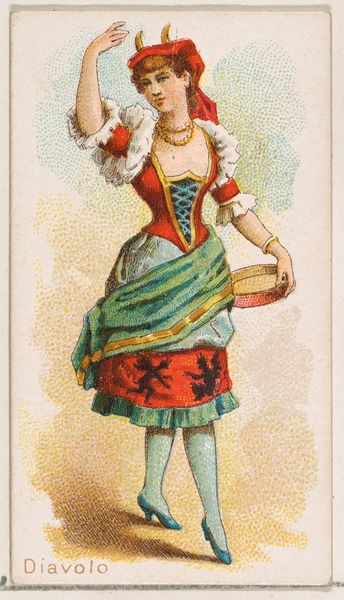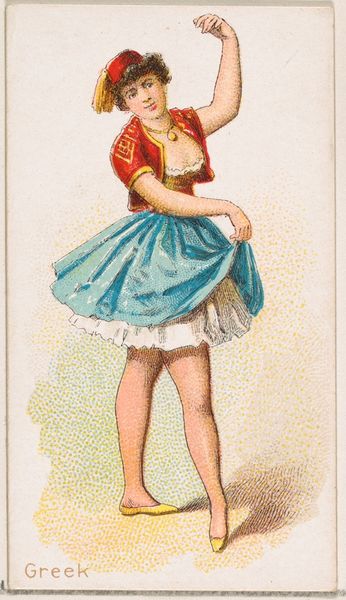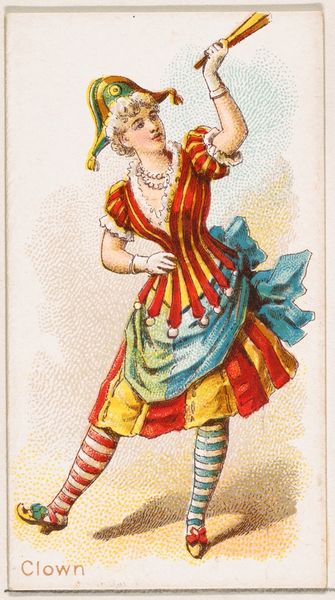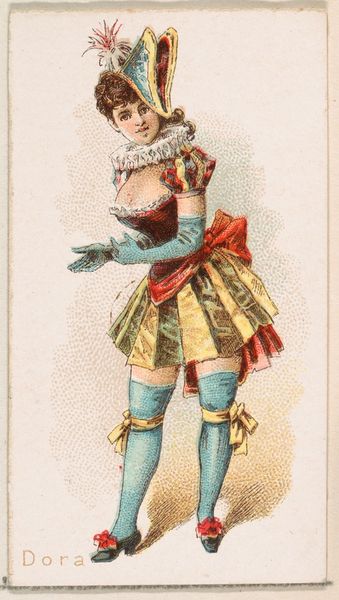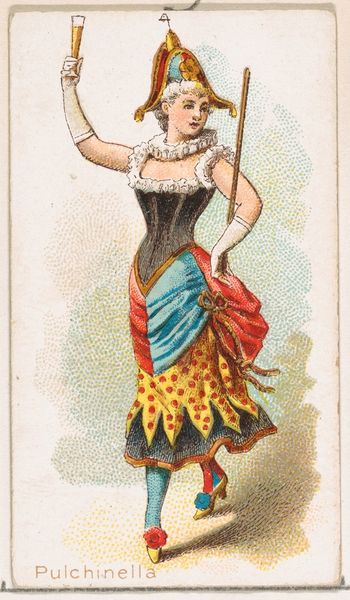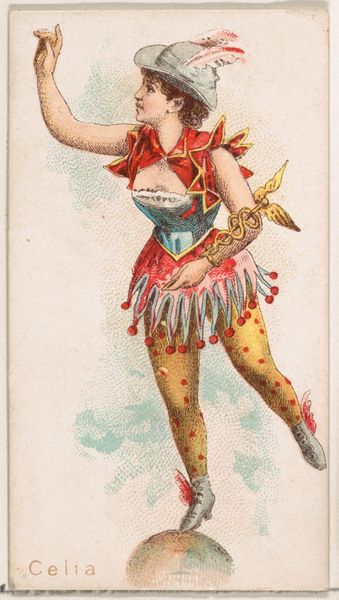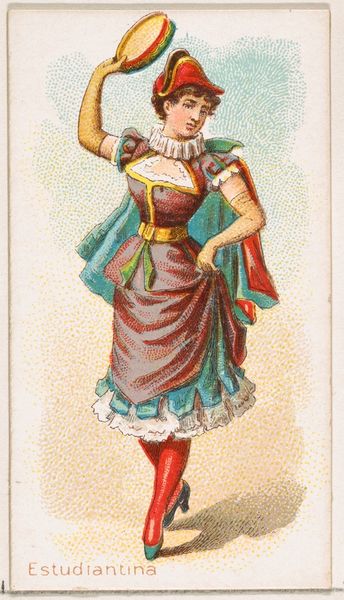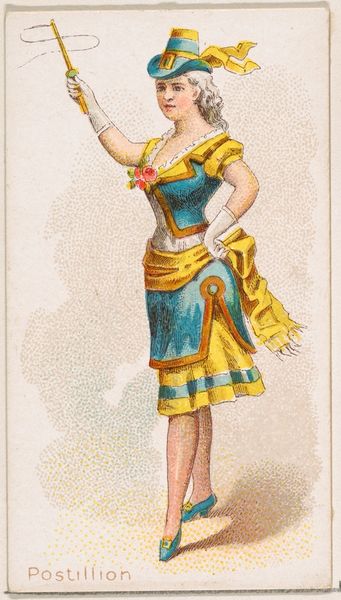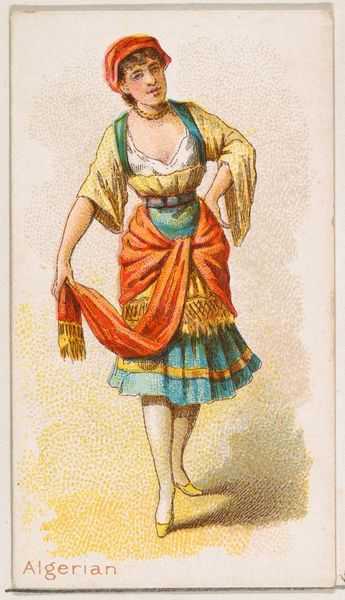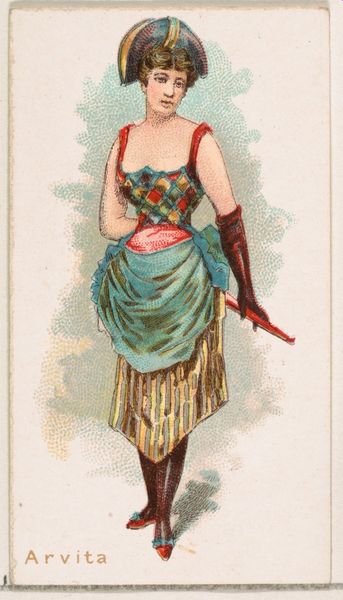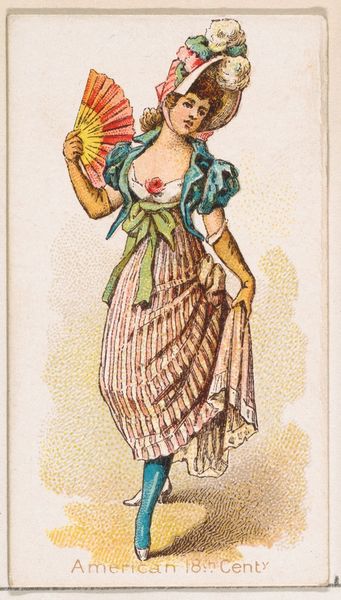
French Shepherdess Dancer, from the Dancing Women series (N186) issued by Wm. S. Kimball & Co. 1889
0:00
0:00
drawing, coloured-pencil, print
#
portrait
#
drawing
#
coloured-pencil
# print
#
impressionism
#
figuration
#
coloured pencil
#
decorative-art
Dimensions: Sheet: 2 11/16 × 1 7/16 in. (6.9 × 3.7 cm)
Copyright: Public Domain
Editor: This print, "French Shepherdess Dancer," comes from the "Dancing Women" series by Wm. S. Kimball & Co. dating back to 1889, crafted with colored pencil. It feels like a glimpse into a theatrical fantasy. What's your take? Curator: I'm interested in the material conditions that enabled its production. This print was distributed by a tobacco company. What does it tell us about the rise of mass consumerism and the role of art within that system? Were these images aimed at a specific class, and what kind of labor was involved in making and distributing such prints? Editor: I see your point! I hadn’t really thought about the labour involved, and it's not exactly what you think of when looking at art in a museum. So how does understanding its origin as a commercial product change our perception of the dancer? Curator: Precisely. Rather than solely focusing on the aesthetic representation of the woman, we can analyze the materials—paper, ink, colored pencils—and the processes involved in reproducing the image on a large scale. The "dancer" becomes secondary to the materiality of the print itself and the socio-economic context surrounding it. It invites consideration of the work as a form of consumption. Do you consider her gaze complicit, defiant, or maybe disconnected from the transaction? Editor: I never looked at art this way. It’s fascinating to think about how these seemingly simple prints reveal a complex relationship between art, labor, and consumer culture. Curator: It's about expanding the frame and considering the tangible elements, not just the represented subject. That awareness, in turn, opens to how our own viewing is produced, what social functions it serves. Editor: Right, it's a challenge to move away from just what the artist is trying to say but more broadly, how this was made and used within a consumerist world. It provides a new appreciation.
Comments
No comments
Be the first to comment and join the conversation on the ultimate creative platform.

